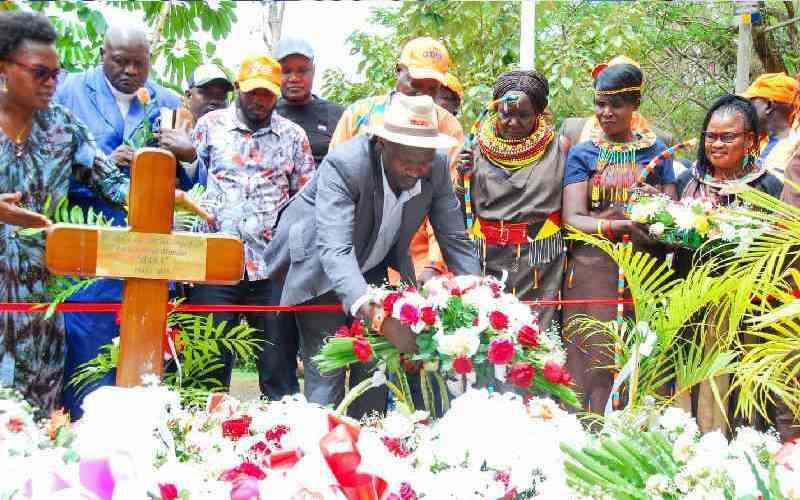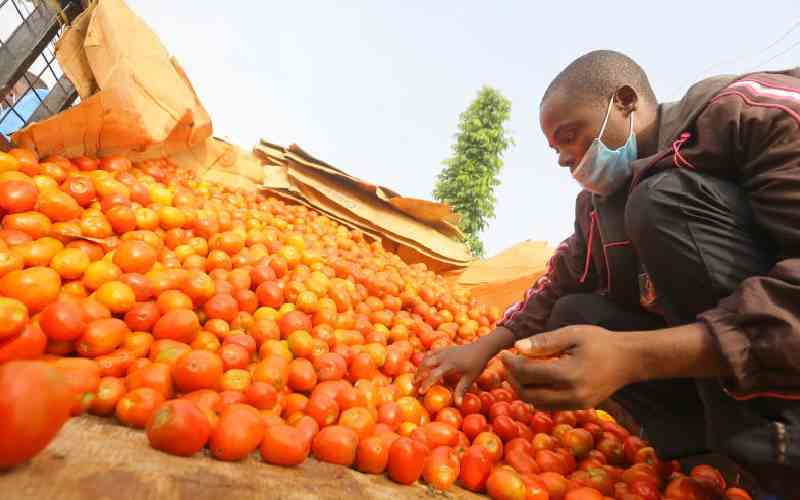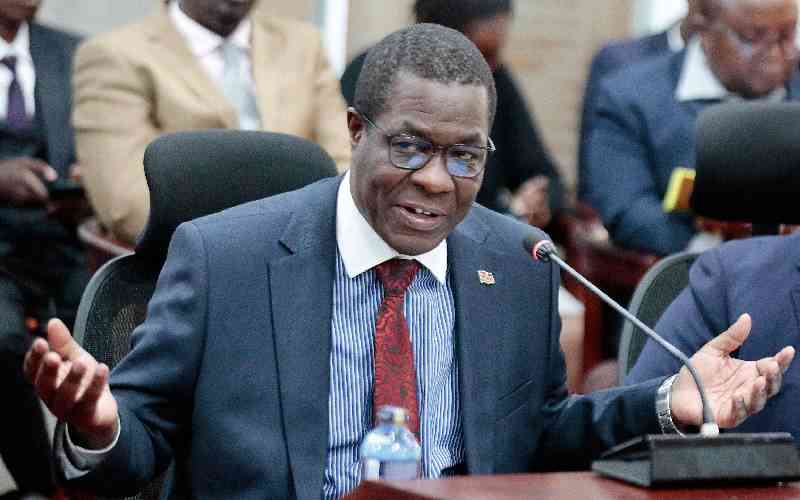
The grave of former Prime Minister Raila Amollo Odinga at Kang’o Ka Jaramogi home in Bondo, Siaya County, has become a sea of color and emotion.
What began on Sunday, October 19, during his burial, as family members, friends, and dignitaries laid wreaths in his honor, has now turned into an overwhelming outpouring of love. Today, the grave is completely covered so full that it can no longer accommodate any more flowers.
Since his burial, a steady stream of mourners, delegations, politicians, and well-wishers from across Kenya and beyond have been visiting Bondo's Kang’o Ka Jaramogi.
Each visitor carries flowers or wreaths, seeking a moment to stand in silence beside Baba’s resting place. For many, laying flowers has become both a form of healing and a deeply personal way to express the pain of losing a man whose presence and influence shaped Kenya’s modern political identity.
The grief following Raila Odinga’s death has been immense. It is a kind of sadness that seems to have no boundaries reaching from the smallest village in Nyanza to the bustling streets of counties all over, and even among Kenyans abroad. His sudden passing left millions in disbelief. “When will Kenyans heal? Baba is no more,” Jane Akinyi , a mourner whispered quietly near the grave, capturing the collective feeling of loss that has engulfed the nation.
The grave itself tells the reflection of the love Kenyans continue to hold for him. Every inch of soil is now covered with blossoms white lilies, red roses, yellow chrysanthemums, and pink carnations. Yet, as beautiful as they are, the flowers quickly wither under the Siaya sun.
To maintain the site, groundsmen have been assigned to collect the dried flowers daily and make room for new ones. They have now become part of the rhythm of mourning, carefully clearing faded petals while ensuring that Baba’s final resting place remains pristine and dignified.
Anne Atieno from Homabay said bringing flowers to Baba’s grave gives her a sense of peace and fulfillment. “It’s not just about decoration; it’s about showing our love and appreciation for a man who gave his all to fight for the rights of ordinary Kenyans,” she explained.
“Every time I lay a flower, I feel as though I’m having a silent conversation with him telling him we are proud of what he stood for, and that his dream for a better Kenya is still alive in us.”
For Andrew Ondara who travelled all the way from Nyamira, the flowers symbolize remembrance and continuity.
“Baba’s spirit lives on, and when we place the flowers there, we’re saying his legacy will never die. Many of us grew up looking up to him as a symbol of hope and courage. The flowers represent that hope. They may fade after a few days, but our respect for Baba will never fade,” he said.
Esther Achieng from Yimbo, she noted that the act of bringing flowers carries deep cultural significance.
“In our Luo culture, we believe in honoring our elders even after they’ve left us. When I come here with my children to place flowers, it’s a lesson I’m passing on that we must always remember those who fought for us. Every petal I lay down is a prayer, a message of gratitude, and a way of keeping his memory alive in our hearts and in the hearts of future generations,” she said.
Despite the passage of days, Opoda Farm has not known silence. On Monday, October 27, former Interior Cabinet Secretary Dr Fred Matiang’i led a large delegation from Kisii and Nyamira counties to visit Mama Ida Odinga and convey their condolences.
The group, composed of political, religious, and community leaders, was warmly received by Mama Ida before proceeding to Kang’o Ka Jaramogi, where they laid flowers too on Raila’s grave. The moment was marked by calm reverence heads bowed, eyes misty, hearts heavy.
Stay informed. Subscribe to our newsletter
This delegation joined a long list of mourners and leaders who have made their way to Bondo since the funeral.
Anthropologists and historians note that the act of placing flowers on graves dates back thousands of years. According to the Biblical Archaeology Society, the earliest known burial with flowers occurred over 14,000 years ago among the Natufian culture, where an adult male and an adolescent were interred with floral offerings.
Ancient Greek and Roman societies also practiced this ritual, believing that flowers brought peace to the spirits and symbolized the continuation of life. Over time, the tradition spread globally and remains one of the most heartfelt ways to honor the dead.
Common flowers used on Kenyan graves include roses for love, lilies for purity, chrysanthemums for loyalty, and carnations for admiration. In recent years, artificial silk flowers and potted plants have also gained popularity for their durability, allowing gravesites to remain adorned long after the fresh blooms fade.







